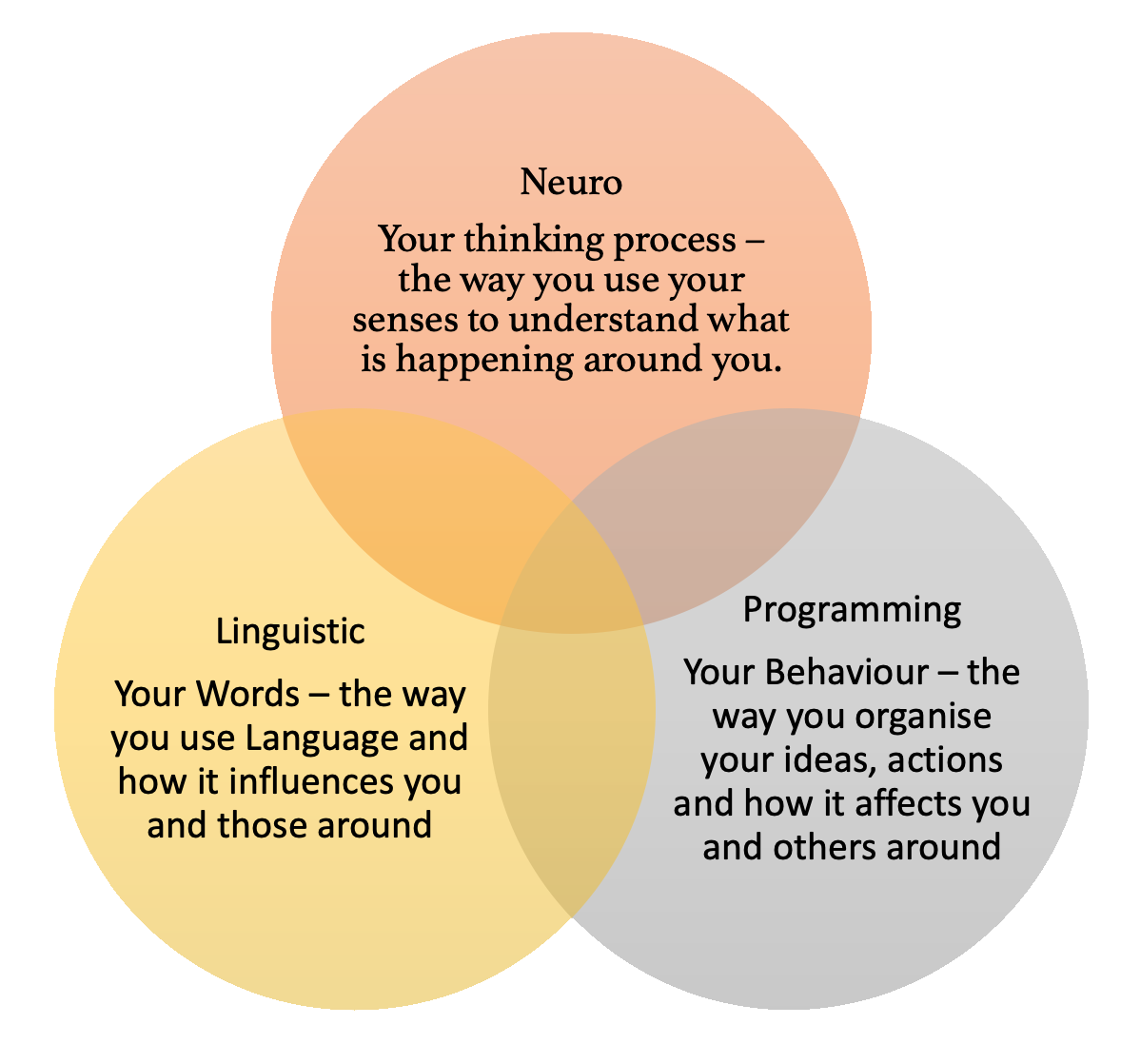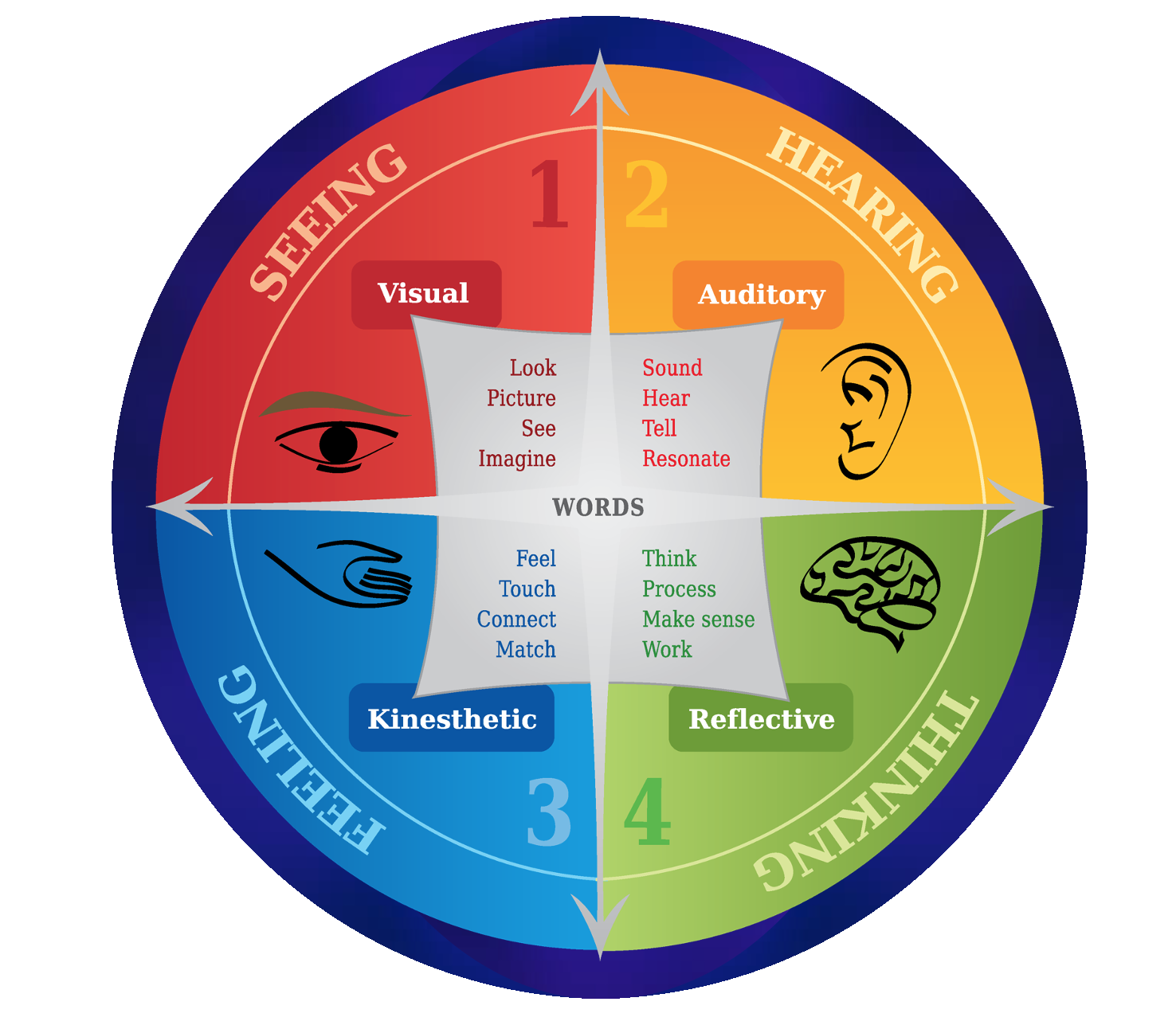Neuro-linguistic programming (NLP)
NLP is like the “User Manual for the Brain."
Starting in the 1970s, NLP researchers began studying the effects of our thoughts on our mind. NLP was developed by Richard Bandler and John Grinder, who believed it was possible to identify the patterns of thoughts and behaviors of successful individuals and to teach them to others. NLP uses perceptual, behavioral, and communication techniques to make it easier for people to change their thoughts and actions. NLP relies on language processing but should not be confused with natural language processing, which shares the same acronym.

The NLP techniques that were discovered can be powerfully effective in changing how you experience the world. Since our thoughts and feelings shape our reality, this means that these NLP techniques can actually transform your entire life. Neuro-linguistic programming is a way of changing someone's thoughts and behaviors to help achieve desired outcomes for them. Since it helps overcome phobias, anxiety and stress, it has a lot to improve workplace performance or personal happiness.
NLP Techniques
Various techniques that are used by NLP practitioners to improve business efficiency and successful team building:
- Anchoring : Turning sensory experiences into triggers for certain emotional states.
- Rapport : The practitioner tunes into the person by matching their physical behaviors to improve communication and response through empathy.
- Swish pattern : Changing patterns of behavior or thought to come to a desired instead of an undesired outcome.
- Visual/kinesthetic dissociation (VKD) : Trying to remove negative thoughts and feelings associated with a past.

NLP Methodology
NLP is not hypnotherapy. Instead, it operates through the conscious use of language to bring about changes in someone‘s thoughts and behavior. For example, a central feature of NLP is the idea that a person is biased towards one sensory system, known as the preferred representational system or PRS.
Therapists can detect this preference through language. Phrases such as "I see your point" may signal a visual PRS. Or "I hear your point" may signal an auditory PRS.
An NLP practitioner will identify a person‘s PRS and base their therapeutic framework around it. The framework could involve rapport-building, information-gathering, and goal-setting with them.

Need for NLP
Individuals in corporates are filled with anxiety, stress, depression due to multiple professional and personal issues including performance pressure, appraisals, losing business, competition, family-life balance and more. With corporate training, our NLP experts coach and mentor your employees to overcome fears and anxiety and deliver excellent results in the work environment.
NLP corporate training can be highly useful in personal and team goal-setting; time-management; developing a right positive attitude; and improving rapport and communication at all levels in an organization.

NLP Training for Professionals
Turn your managers and leaders as better coaches, motivators & influencers.
- Self-Improvement
- Develop a proactive attitude
- Create ownership
- Problem-Solving skills
- Leadership development
- Emotional and Physical Healing
- Cultural Changes
- Deliver outstanding performance
About Us
Lives Beyond Boundaries is a platform which helps an individual to explore a life which is beyond the confines of a definite & pre-determined life. Here, we believe in the attributes you are born with, and strive to help you realise your true potential. We facilitate this belief through various activities of self-awareness and holistic development.
